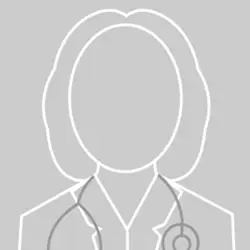Growth disorders
"A multidisciplinary team offers numerous advantages. The patient can be treated by different specialists. This way we achieve a better diagnosis and a more effective treatment".
DR. CRISTINA AZCONA
SPECIALIST. PEDIATRICS DEPARTMENT

When does a growth problem appear in children?
Growth hormone deficiency is a congenital or acquired condition characterised by a total or partial absence of growth hormone in plasma. It occurs when there is a failure in the pituitary gland, in the hypothalamus or in the pathway linking the hypothalamus to the pituitary gland.
The Endocrinopediatrics Unit at the Clínica Universidad de Navarra assesses and diagnoses children and adolescents with hormonal problems that may affect their growth and development.
After the diagnostic tests, we indicate an individualised treatment plan with the administration of medication for those patients who require it. The aim is to correct the hormonal deficiencies responsible for the patient's physical and psychological alterations.

What are the symptoms of growth faltering?
Height below the percentile for the child's age is a warning sign of a possible growth disorder.
Children with congenital GH deficiency have weight and height in the normal range at birth. Prolonged neonatal jaundice is common (50% of cases). Hypoglycaemia may occur in the first 4 years of life. Height is usually affected from the first 3-6 months of life, so that by the age of two years it may be at or below the 3rd percentile.
Growth velocity is slow, below the 25th percentile. Bone maturation is 1-4 years behind chronological age. Without treatment, pubertal growth spurt is often delayed until 18-20 years of age.
Intelligence is normal, but signs of immaturity and difficulty adapting to the social environment are common, secondary to parental protectionism and low self-esteem due to short stature.
The most common symptoms are:
- Low height
- Hypoglycaemia
- Immaturity
- Low self-esteem
In acquired forms, they show normal growth at the beginning, slowing down or stopping their growth curve later on. They have harmonious measurements, age-appropriate head circumference, delayed fontanelle closure and slow-growing hair. The facies is described as doll or cherub face. It is small with a domed forehead, flat nasal root and altered dentition. They may have a high-pitched voice with a peculiar tone, slight overweight, poorly muscled limbs with a graceful appearance, and small hands and feet.
In some children, growth retardation is the only symptom, so GH secretion should be explored in any patient with growth retardation of unknown aetiology.
Do you have any of these symptoms?
If you suspect that you have any of the above symptoms,
you should consult a medical specialist for a diagnosis.
What are the most common causes of growth faltering?
The most frequent causes of GH deficiency are idiopathic. Abnormalities in the synthesis, secretion and activity of growth hormone (GH) are usually sporadic and heterogeneous, including genetic syndromes with or without molecular basis (3% of children have a sibling with the same deficit, being more frequent in males), malformations, alterations in embryonic development, trauma, hypoxic processes, infections, tumours of the hypothalamic-pituitary region or brain and their treatment with surgery or radiotherapy, and peripheral insensitivity to GH.
GH deficiency may be associated with other pituitary hormone deficiencies, especially sex hormone deficiency, which is most often not diagnosed and treated until puberty, when it is detected.
There may also be deficiency of thyroid-stimulating hormones of the adrenal cortex, although less frequently.
What is short stature?
Short stature refers to children whose height is below the 3rd percentile (-2 SD) of the population height standards for their age and sex. In 80% of the children whose height is below the 3rd percentile, there is no cause for this. The remaining 20% have a pathological origin.
Within the group of unexplained short children different patterns of short stature can be distinguished. There is a group of children with a height below the 3rd percentile (-2 SD) who were born with a normal length, and their body proportions are also normal. In these children there is no chronic disease to justify their height and their growth rate is slow but uniform. Within this group we can find children with growth below the family range and delayed pubertal onset (constitutional growth and developmental delay) and children whose growth is within the family range and whose pubertal onset is normal (familial short stature).
Children with constitutional stunting have normal growth for the first few years. Subsequently, they are stunted to below normal. They have a delayed bone age. Puberty is delayed after age 14 in girls and 16 in boys.
How are growth problems in children diagnosed?
It is based on clinical, hormonal (GH), radiological, genetic and growth factor (IGF-I and IGFBP-3) studies. GH is released in daily peaks, mainly during sleep. Provocation tests (insulin, glucagon, clonidine, clonidine, arginine) are used to assess GH. A value <10 ng/ml suggests deficiency: partial between 5-10 ng/ml, total <5 ng/ml. Response varies according to age and pubertal stage.
How are growth disorders treated?
The goal of treatment is to increase growth rate and adult size.
The availability of large amounts of growth hormone (GH) due to its obtention by recombinant DNA engineering, allows a better understanding of its metabolic effects and demonstrates that it not only stimulates growth in children with GH deficit, but also in those with low height and apparently normal GH.
Treatment should be initiated early, establishing the diagnosis of certainty. The doses used range from 0.025-0.050 mg/kg/day. They are individually adjusted according to response and levels of IGF-I and IGFBP-3. It is administered subcutaneously before bedtime.
At the end of the growth, a diagnostic reevaluation is made and if the GH deficit persists, the treatment will continue in adult life at lower doses. Side effects are very rare. There are some cases of alteration of the femoral head (epiphysiolysis), carpal tunnel syndrome, secondary hypothyroidism, lipodystrophy at the injection site, development of anti-GH antibodies, hypertension, carbohydrate intolerance.
During treatment, monitoring tests are performed to detect any side effects and treat them.
Where do we treat it?
IN NAVARRA AND MADRID
The Department of Pediatrics
of the Clínica Universidad de Navarra
All our specialists work exclusively and, in addition, since we have all the technology in the same center, we offer the performance of tests and diagnosis in less than 72 hours.
We have a team of highly qualified professionals to attend the different specialized units: Oncopediatrics, Neuropediatrics, Endocrinopediatrics, Neonatology, etc.
Organized in specialized units
- Neonatology Area.
- Pediatric Endocrinology.
- Pediatric Cardiology.
- Pediatric Neuropediatrics.
- Digestive and pediatric nutrition.
- General and preventive pediatrics.
- Pediatric Pneumology.

Why at the Clinica?
- Comprehensive care of the child.
- Professionals who are experts in the different areas for a better diagnosis and treatment.
- Equipped with the latest technology for newborn care.


























